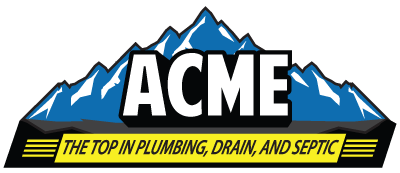Common Septic Tank Issues: How to Identify and Solve Them
Septic tanks are essential components of many homes, especially in rural areas without access to municipal sewage systems. They treat and dispose of household wastewater efficiently, but like any system, they can encounter issues over time. Identifying and addressing these problems promptly can prevent costly repairs and ensure your septic system functions optimally. Here are some common septic tank issues and how to solve them.
1. Slow Drains and Backups
Identification: One of the most common signs of a septic tank issue is slow-draining sinks, toilets, or showers. You might also experience frequent backups, especially in the lowest drains of the house.
Solution:
Regular Pumping: The most common cause of slow drains is a full septic tank. Septic tanks should be pumped every 3-5 years, depending on the size of the tank and household usage.
Avoid Flushing Non-Flushables: Items like wipes, feminine hygiene products, and grease should never be flushed or poured down the drain as they can cause blockages.
Professional Inspection: If regular septic tank pumping doesn't solve the issue, it might be a sign of a more serious problem, like a clogged outlet pipe or drain field. In such cases, it's best to call a professional.
2. Foul Odors
Identification: Persistent foul odors around your property, especially near the septic tank or drain field, can indicate a problem with your septic system.
Solution:
Check Vent Pipes: Sometimes, the odors are caused by a blockage in the vent pipes. Ensure these are clear and functioning correctly.
Seal Cracks: Cracks in the tank or pipes can also cause odors to escape. Have a professional inspect and seal any cracks.
Proper Maintenance: Regularly maintaining your septic system, including pumping and avoiding the use of harsh chemicals, can prevent odors from developing.
3. Lush, Green Grass Over the Drain Field
Identification: While it might seem like a good thing, overly lush and green grass over the drain field can indicate that your septic system is leaching more liquid than it should.
Solution:
Inspect for Leaks: Excessive moisture in the drain field can be a sign of a leak or overflow. Have a professional inspect for and repair any leaks.
Check for Clogs: A clogged distribution box or drain pipes can cause uneven distribution of effluent, leading to patches of lush grass. Cleaning or replacing these components can help.
4. Pooling Water
Identification: Water pooling around the septic tank or drain field area is a clear sign of a problem. This can indicate that the system is overloaded or that there is a blockage somewhere.
Solution:
Reduce Water Usage: If your system is overloaded, reducing water usage can help. Fix any leaking faucets or toilets and try to spread out water-intensive activities.
Professional Assistance: Pooling water often requires professional intervention to diagnose and fix the underlying issue, such as a broken pipe or a failing drain field.
5. Gurgling Pipes
Identification: Gurgling sounds coming from the pipes can indicate a problem with the septic system. This is often a sign of a blockage or that the tank is full.
Solution:
Pump the Tank: As with slow drains, gurgling pipes often mean the tank needs to be pumped.
Check for Blockages: Ensure there are no blockages in the pipes leading to the septic tank.
Preventive Measures
Preventing septic tank issues is always better than having to solve them. Here are some preventive measures:
Regular Pumping: Adhere to a regular pumping schedule to prevent overflows and backups.
Mindful Flushing: Only flush toilet paper and human waste. Avoid flushing items like wipes, grease, and chemicals.
Water Conservation: Implement water-saving fixtures and practices to reduce the load on your septic system.
Routine Inspections: Have a professional inspect your septic system regularly to catch and address issues early.
Understanding and identifying common septic tank issues can save you from costly repairs and ensure your system runs smoothly. Regular maintenance, mindful usage, and prompt professional intervention are key to solving and preventing septic tank problems. By staying proactive, you can protect your home and environment from the potential hazards of septic system failures.
